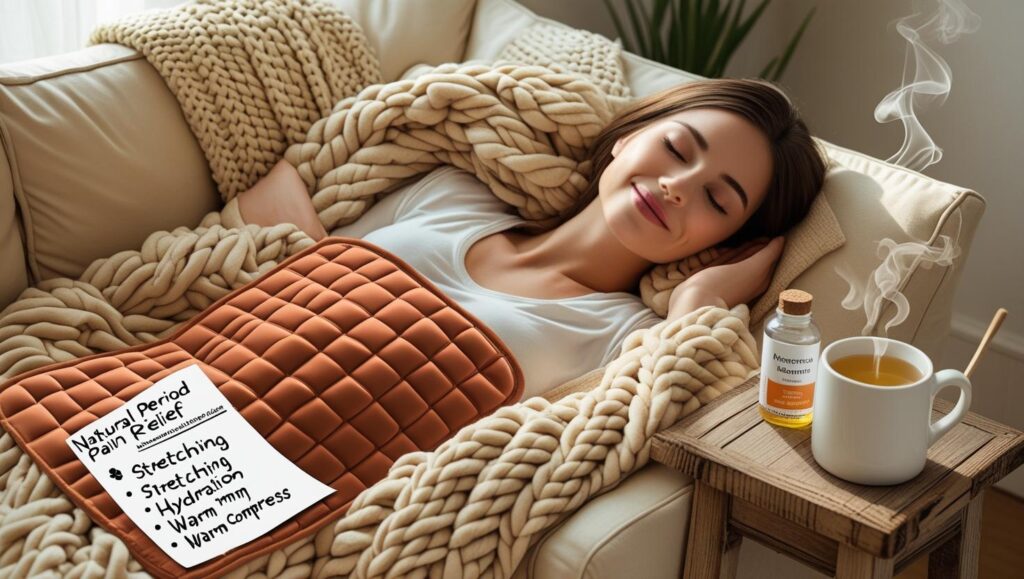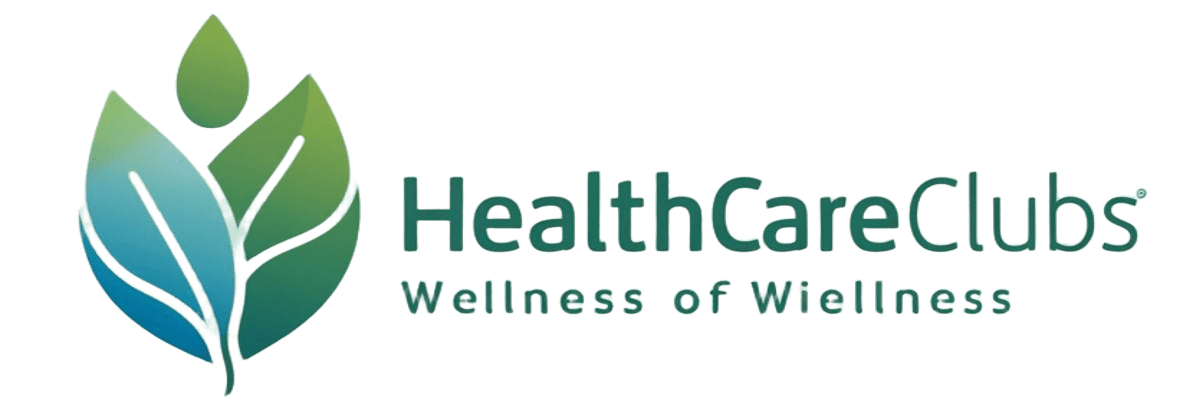Period cramps, also known as dysmenorrhea, are a common and often painful experience for many women during their menstrual cycle. While over-the-counter medications like ibuprofen and naproxen can be effective, many people prefer natural remedies to avoid side effects or to complement other treatments. Fortunately, there are numerous ways to relieve menstrual pain naturally.
In this guide, we’ll explore effective, evidence-based, and safe natural methods to help you manage and reduce period cramps without relying on pharmaceuticals.

Understanding Period Cramps
Before we dive into the solutions, it’s essential to understand what causes period cramps. Menstrual cramps occur when the uterus contracts to shed its lining. These contractions are triggered by hormone-like substances called prostaglandins. Higher levels of prostaglandins are associated with more intense cramps.
Symptoms may include:
- Throbbing or cramping pain in the lower abdomen
- Lower back and thigh pain
- Nausea or vomiting
- Fatigue
- Headaches
Now let’s explore natural ways to ease this discomfort.
1. Apply Heat
Heat therapy is one of the simplest and most effective ways to relieve menstrual cramps.
How it helps:
Heat relaxes the muscles of the uterus, improves blood flow, and reduces pain signals sent to the brain.
What you can do:
- Use a heating pad or hot water bottle on your lower abdomen.
- Take a warm bath with Epsom salts.
- Try heat patches available at pharmacies.
Tip: Use heat for 15–20 minutes at a time, several times a day, especially during the first few days of your period.
2. Stay Active and Exercise
Though it may be the last thing you want to do during your period, light physical activity can significantly help reduce cramps.
How it helps:
Exercise boosts endorphins, your body’s natural painkillers. It also reduces stress and improves blood circulation.
Best exercises:
- Walking
- Light jogging
- Stretching
- Yoga
- Swimming
Tip: Aim for 30 minutes of gentle activity on most days of your period.
3. Try Herbal Teas
Herbal remedies have been used for centuries to ease menstrual discomfort.
Popular options:
- Chamomile tea: Has anti-inflammatory and antispasmodic properties.
- Ginger tea: Reduces inflammation and soothes nausea.
- Peppermint tea: Relieves bloating and digestive issues.
- Cinnamon tea: Known for reducing heavy bleeding and cramping.
Tip: Drink herbal teas 2–3 times a day during your cycle. Always consult a doctor if you’re taking medications, as herbs can interact with them.
4. Eat Anti-Inflammatory Foods
Your diet plays a crucial role in how your body manages pain and inflammation.
Foods to eat:
- Fruits and vegetables rich in antioxidants (berries, leafy greens)
- Omega-3 fatty acids from flaxseed, chia seeds, and walnuts
- Whole grains like brown rice and oats
- Legumes and beans
- Nuts and seeds
Foods to avoid:
- Processed foods
- Excess salt and sugar
- Caffeine
- Alcohol
- Red meat
Tip: Follow a balanced, anti-inflammatory diet year-round to reduce the severity of cramps over time.

5. Stay Hydrated
Drinking enough water is vital during your period.
How it helps:
Staying hydrated prevents water retention, bloating, and can help ease muscle contractions.
What to do:
- Drink at least 8–10 glasses of water daily.
- Include electrolyte-rich drinks like coconut water.
- Add lemon, cucumber, or mint for flavor if plain water is boring.
Tip: Avoid sugary sodas or too much caffeine, as they can dehydrate you.
6. Practice Yoga and Stretching
Yoga is a natural, low-impact way to relax your body and mind, and it’s especially effective for period pain.
Beneficial poses:
- Child’s Pose (Balasana)
- Cat-Cow Pose
- Cobra Pose
- Seated Forward Bend
How it helps:
Yoga helps stretch the pelvic muscles, reduce tension, and calm the nervous system.
Tip: Practice 15–30 minutes of yoga daily, even when you’re not on your period, to build strength and flexibility.
7. Massage with Essential Oils
A gentle abdominal massage can reduce cramping and improve circulation.
Best essential oils for cramps:
- Lavender: Calms the body and reduces pain.
- Clary sage: Balances hormones and relaxes uterine muscles.
- Peppermint: Cools and relieves tension.
How to do it:
- Mix a few drops of essential oil with a carrier oil (like coconut or almond oil).
- Massage your lower abdomen in circular motions for 5–10 minutes.
Tip: Do this 1–2 times a day for the first 2–3 days of your period.
8. Acupressure and Acupuncture
Both traditional Chinese medicine techniques have been shown to relieve menstrual pain.
Acupressure:
Pressing specific pressure points (like Spleen 6, located above the ankle) can reduce cramps.
Acupuncture:
Involves the insertion of fine needles into certain areas of the body to balance energy flow.
Tip: See a certified practitioner for professional acupuncture, or learn safe acupressure techniques to use at home.
9. Take Magnesium and Vitamin Supplements
Micronutrients can help regulate menstrual symptoms.
Key nutrients:
- Magnesium: Helps relax muscles and reduces prostaglandin levels.
- Vitamin B6: Supports hormone balance and reduces bloating.
- Vitamin E: Acts as an anti-inflammatory.
- Calcium: Eases muscle cramps.
Natural sources:
- Leafy greens
- Bananas
- Avocados
- Whole grains
- Almonds
Tip: Consult your doctor before starting any supplements to ensure proper dosage and safety.

10. Improve Sleep and Reduce Stress
Poor sleep and high stress can intensify cramps by increasing inflammation and hormone imbalance.
Natural ways to reduce stress:
- Practice meditation or deep breathing techniques
- Use aromatherapy with lavender or chamomile oils
- Stick to a consistent sleep schedule
- Reduce screen time before bed
Tip: Aim for 7–9 hours of sleep per night and carve out relaxation time daily.
11. Avoid Smoking and Limit Alcohol
Both smoking and alcohol can worsen period symptoms.
Why:
- Smoking constricts blood vessels and may increase pain.
- Alcohol dehydrates and may contribute to bloating and mood swings.
Tip: Reducing or quitting smoking and limiting alcohol intake can lead to significant improvements in menstrual health.
12. Track Your Cycle
Knowing when your period is coming can help you prepare and implement natural strategies in advance.
Use:
- Menstrual tracking apps (e.g., Clue, Flo, Period Calendar)
- Physical calendars or journals
Tip: Start natural remedies like herbal teas, hydration, and light exercise a few days before your period begins for the best results.
Final Thoughts
Period cramps can disrupt your daily life, but they don’t have to control it. With the right combination of natural remedies, lifestyle changes, and mindful self-care, you can reduce both the frequency and intensity of menstrual pain. While these strategies may not eliminate cramps entirely, they can make your periods much more manageable.
However, if you experience severe, debilitating cramps that don’t respond to natural remedies or medication, it may be a sign of an underlying condition like endometriosis or fibroids. In such cases, it’s important to consult a healthcare provider.
Key Takeaways
- Use heat therapy to soothe abdominal pain.
- Stay active with light exercises and yoga.
- Drink herbal teas and eat an anti-inflammatory diet.
- Try essential oil massages, acupressure, and vitamin supplements.
- Prioritize hydration, sleep, and stress reduction.
- Avoid triggers like smoking and alcohol.
By incorporating these natural techniques into your routine, you can gain better control over your menstrual health — safely, effectively, and naturally.
![]()






